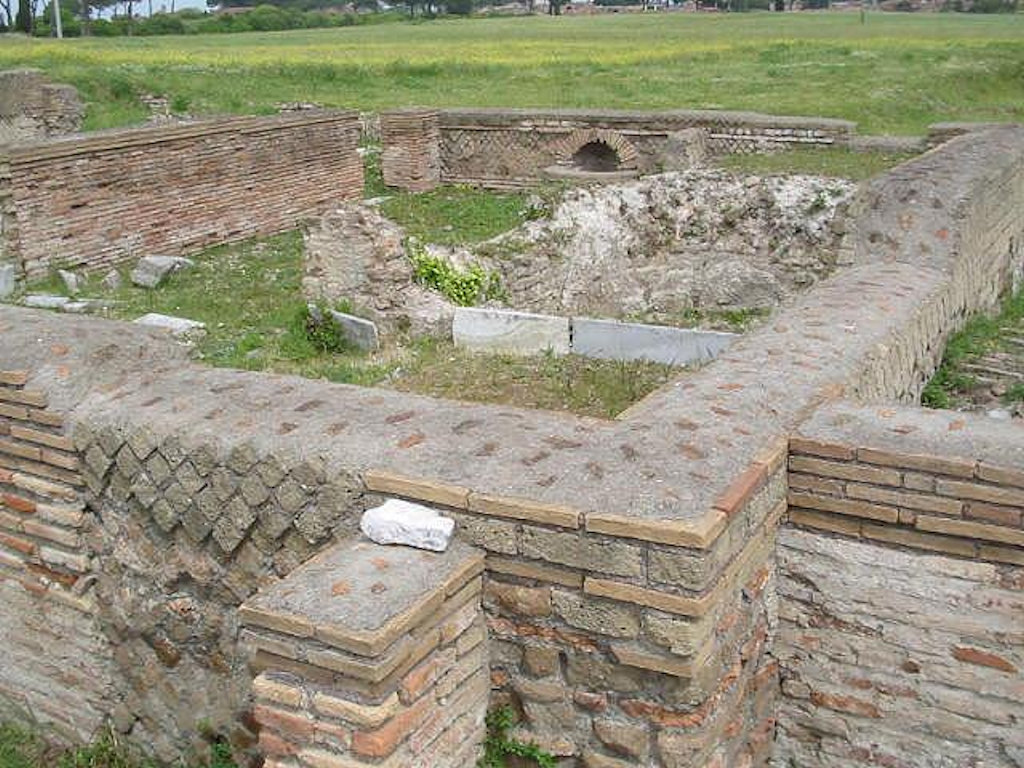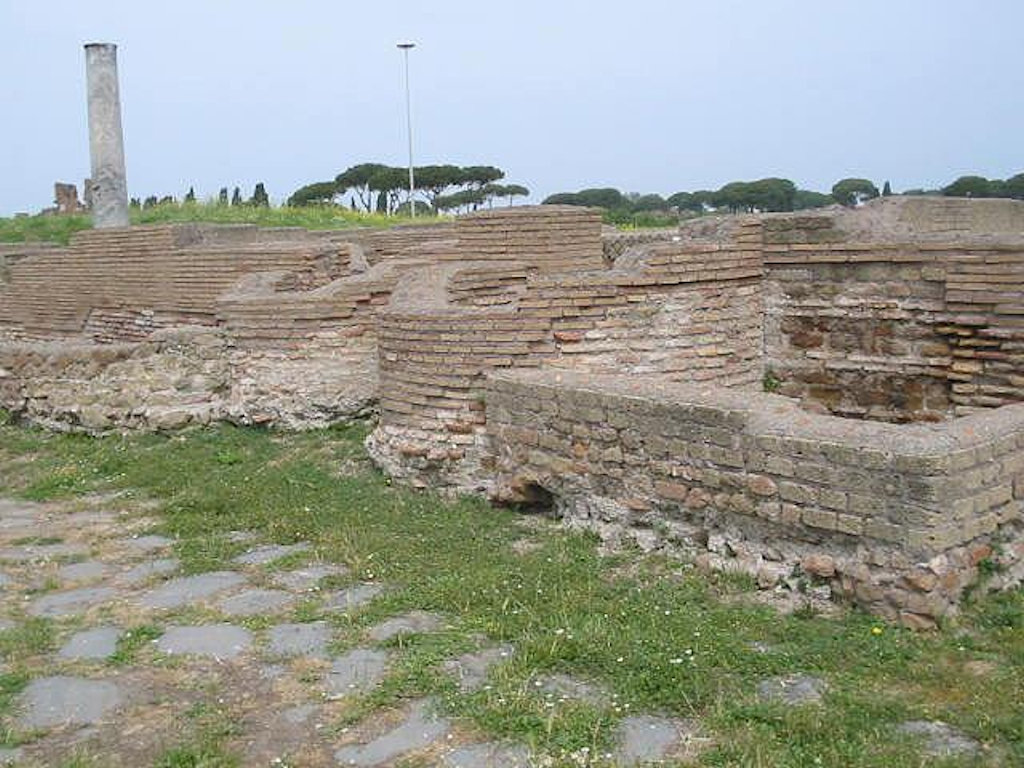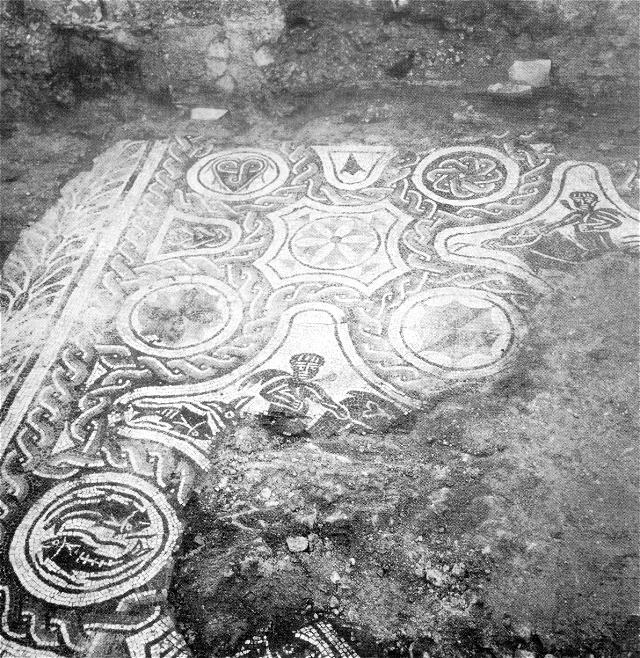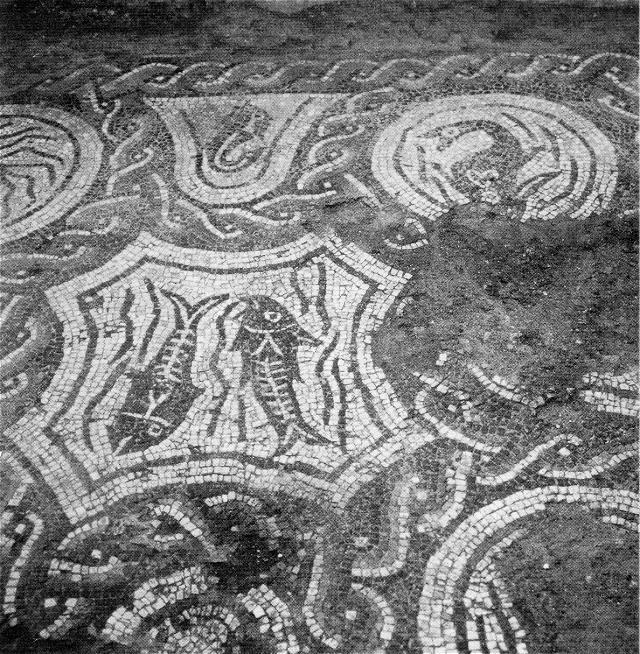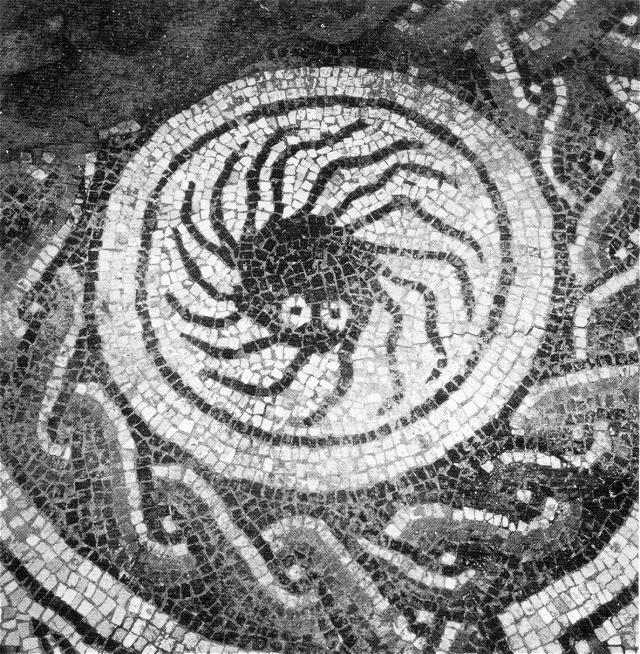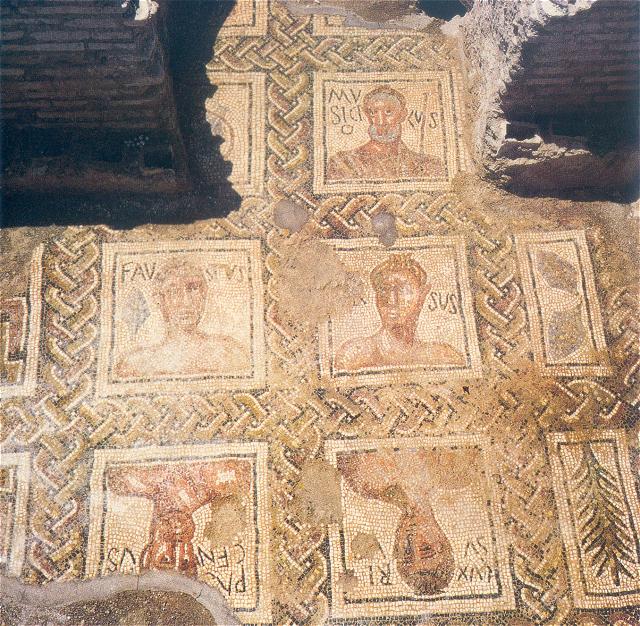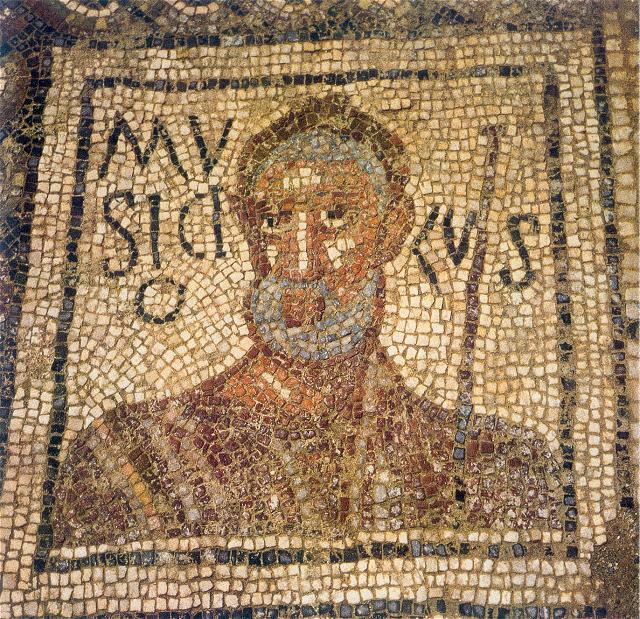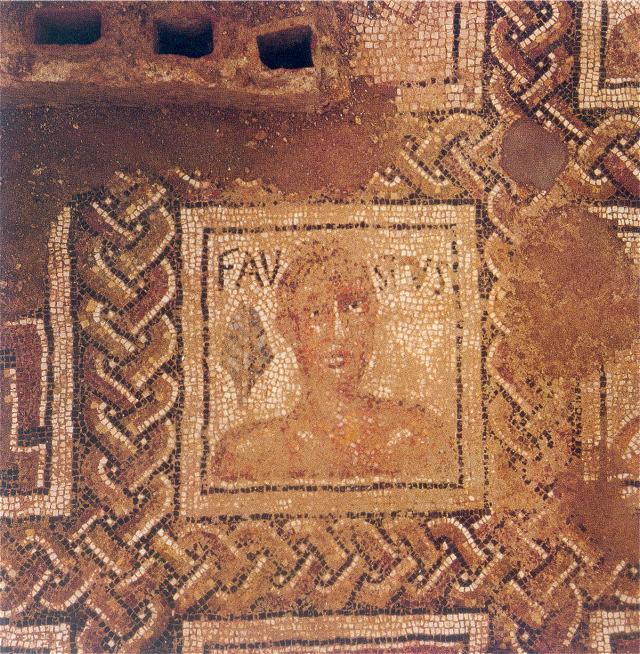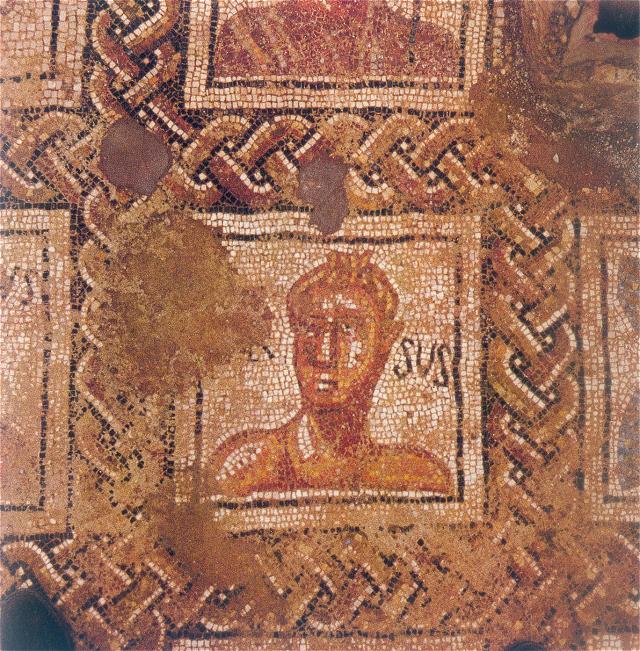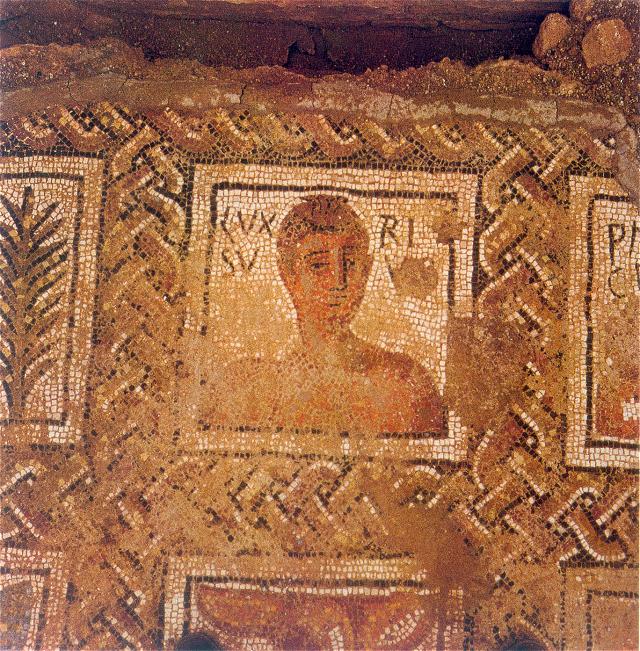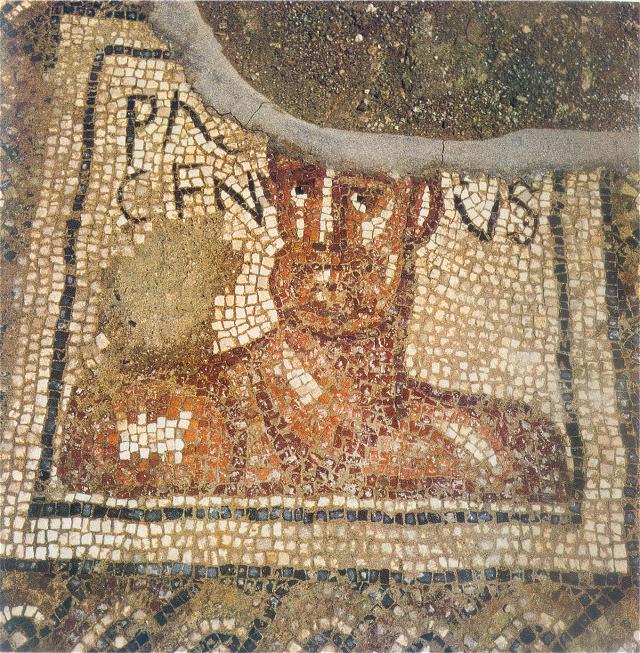The Baths of Musiciolus are in the extreme south of Ostia, rather isolated in a mostly unexcavated area, to the east of the Baths of the Marine Gate and to the west of the Synagogue. They are to the north of the Via Severiana. They were excavated in the early 1980's. The masonry of the building is opus mixtum (Antonine), opus latericium (Severan), and opus vittatum (fourth century). The baths were installed in the second phase.
Plan of the baths. Parco Archeologico di Ostia Antica.An entrance hall has been recognized (A), a frigidarium (B), and a row of four tiny heated rooms with two apses along the Via Severiana. In the rooms to the north of the heated rooms two mosaics were found. The eastern one is a black-and-white mosaic with a simple geometric motif, the other one is partly black-and-white, partly polychrome, but there is only a limited use of colour. The latter mosaic has black-and-white depictions of dolphins, fishes, and erotes riding dolphins, between which are polychrome decorative motifs. Curious is the depiction of fishes of which the bones can be seen, as if it is an X-ray photograph.
Drawing of the mosaics in the rooms to the north of the heated rooms. Parco Archeologico di Ostia Antica.In the heated rooms three mosaics were found: a black-and-white geometric mosaic at the west end, a polychrome geometric mosaic in the room at the east end, and a polychrome mosaic with busts of four athletes and a referee in the central room. Unfortunately the mosaic with the athletes was stolen shortly after the excavation.
Drawing of the mosaics in the heated rooms. Parco Archeologico di Ostia Antica.The names of the athletes are written on either side of the head. The referee is called Musiciolus ("Harmonious"). He is bearded and around his hair is a fillet. In his left hand is some sort of sceptre. The athletes are naked. One is called Faustus ("Lucky"). A palm branch, referring to victory, is to the left of his head. The athlete next to him is called Ursus ("Bear"). The other two athletes are opposite Faustus and Ursus. Their names are Luxsurius ("Voluptuous") and Pascentius (the meaning of his name is not clear; probably it has a Christian connotation). These athletes are not known otherwise. Next to and above Musiciolus are three more frames, in a small apse (a later addition). Two depictions have been preserved, of weights used in the long jump, and of a metal vessel for oil, that was carried together with the strigiles. Palm branches are depicted in frames to the right of Ursus and Luxsurius. The mosaic was probably made in the early fourth century.
